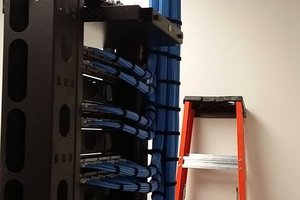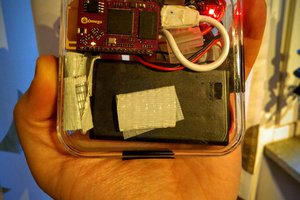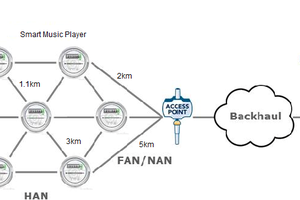Keywords: GSM, GPS, ELB-REV4 iSCADA, IR SENSOR, FIRE SENSOR, SMS, CLOUD, IoT, IIoT, internet of trains, railway safety, rail planning and scheduling, predictive maintenance, WSN, railway enhanced services, freight transportation, cyber security.
Introduction
The current network connectivity has increased over the last decade. An explosive growth in the number of computers and the need to share information has triggered the development of computer networks. Moreover, today’s application demands a wide variety of services from the network. There are many different classes of traffic on the network and each traffic type has different quality of service requirements. All these applications assume that the network will provide them with the best possible service it has to offer. To provide efficient service to each application, the network must always be operating efficiently. If there are any network failures, they must be rectified immediately. Network failures cause various losses such as efficiency and productivity, and eventually manifest as monetary losses to both the clients and network access providers.
Current network management systems help a network operator to detect and diagnose the problems in a network. However, as the complexity of today’s networks increases, there is a greater demand for the network to be self managing. A self-managing system should be capable of automatically detecting and diagnosing the network problems. A capability to repair ordinary faults would also be desirable in such systems. In this paper, we present an architecture for an intelligent network management system, called ExNet. We use expert system technology to add intelligence capability to commercially available network management systems.
The organization of the paper is as follows. In Section 2, we present the ExNet architecture. The component modules of the system are described here. Section 3 covers the implementation aspects of ExNet prototype. The various subsystems we have developed are described. We conclude the paper in Section.
Architecture of an Intelligent Network Management System
Current network management systems are in general complex. They provide a lot of information and many different services. This has complicated the development of network management applications that utilize the services of these network management systems. The main goal of our effort is to apply expert system technology to reduce the severity of this problem and allow less experienced network operators to efficiently manage a large and complex computer network. Therefore, we need a management system which will analyze the network and its services, and properly manage its performance. It must be intelligent enough to diagnose most of the faults as they occur and have the capability to suggest corrective actions. Despite this complexity, the system should be easy enough to use. For this we use a web-based technology to provide the required user interface [BEGG 94]. The use of web-based technology enables us to provide a better graphical user interface to ExNet. Moreover, this allows users to have a global access to ExNet resources and information any time and from anywhere with Internet access.
Implementation
We have developed a rule based expert system prototype, with rules for load monitoring and traffic routing. The Network Manager Interface has been implemented using web technology. Using the web-based interface we can perform basic network monitoring services. The network interface has been implemented using the IBM NetView/6000 for AIX Network Management System. The NetView/6000 is an SNMP based networking tool primarily meant for data collection in IP networks. It can also monitor various network parameters against previously defined thresholds and generate traps for network operators. We can use these traps to trigger other programs, such as the monitor.
Expert System...
Read more » ssla-couk
ssla-couk
 Martin
Martin
 Thaddaeus
Thaddaeus
 platis.solutions
platis.solutions